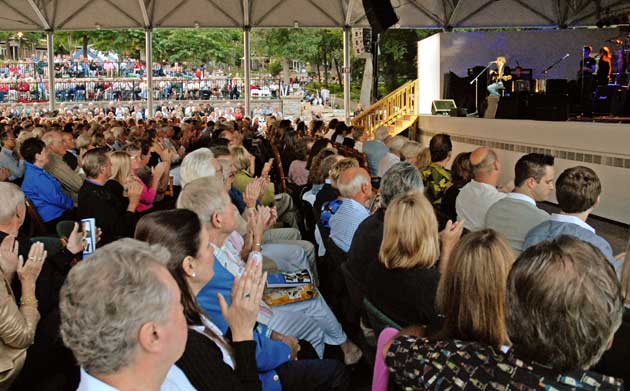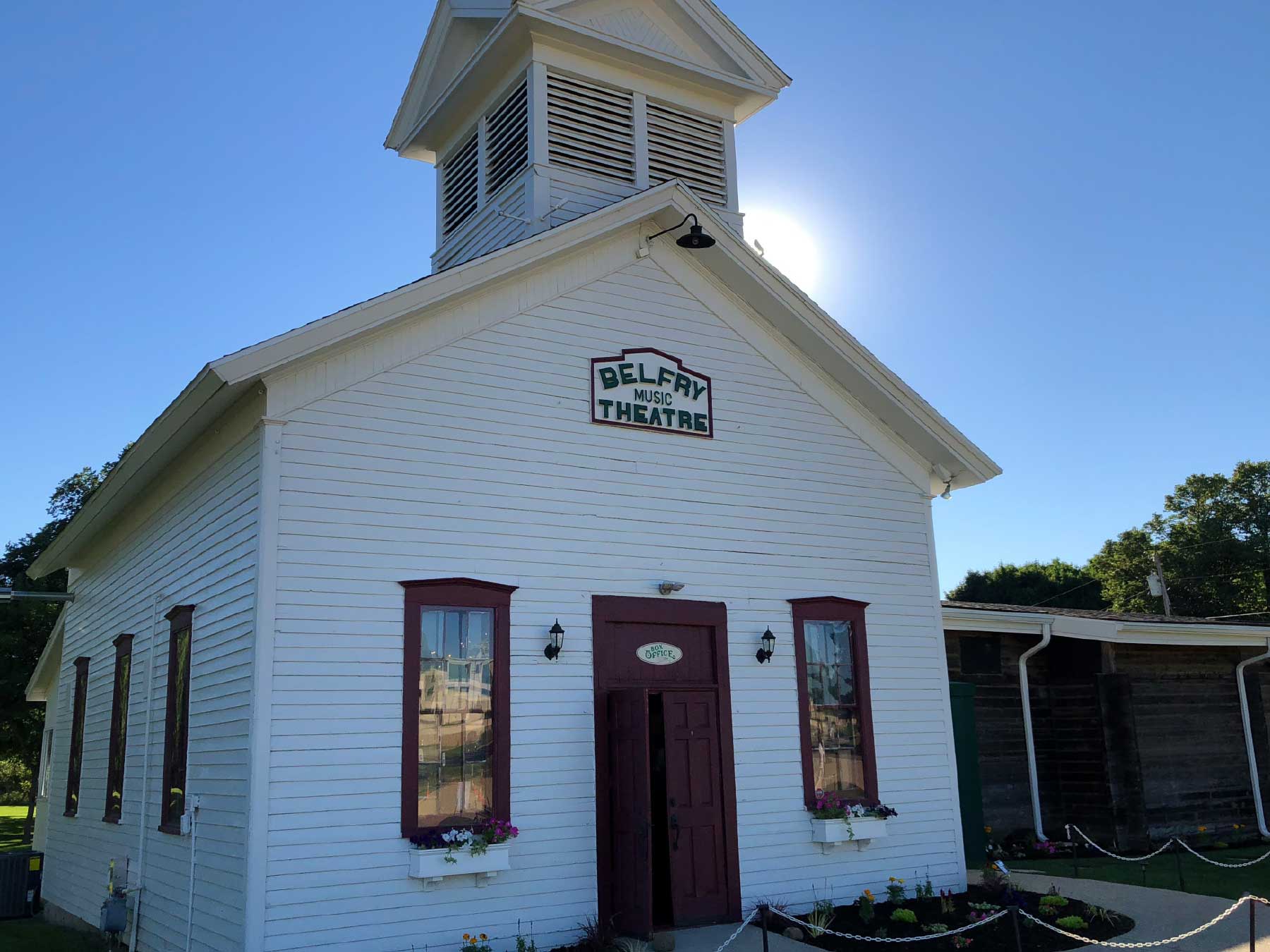Broadway musicals and big-name acts are just part of the amazing lineup visitors will find at this outdoor concert venue. Meet the big-city personality behind the summer spectacular.

Following its 10-year anniversary last year, Music by the Lake, the summer music series at George Williams College of Aurora University (GWC) in Williams Bay, Wis., has some exciting changes in store for 2011.
“We always have a talk session when the season closes, to discuss what worked and what didn’t,” says Christine Flasch, a native Midwesterner who’s served as the program’s executive/artistic director for 11 years. “This year, we invited some special friends of Music by the Lake, and conducted two focus groups.”
Several exciting initiatives resulted, among them a change in the staged show. This season will see the first Broadway musical, “Brigadoon.” Flasch, a classically trained soprano who sang at the Metropolitan Opera in New York, has staged an opera each year since 2002. For the past two years, she moved from light operettas performed in English, to full operas sung in Italian. This year, she again challenges herself with a different type of show.
“Brigadoon” was the first big hit for the team of Alan Jay Lerner and Frederick Loewe (“Camelot,” “Paint Your Wagon”). Originally choreographed for the stage in 1947 by Agnes de Mille, its sweeping dances are both balletic and athletic, and contribute greatly to the magic and lore of the show. “So many deserving people auditioned that it was a bit daunting,” says Flasch. “But I forged ahead, made the call-backs and cast my dancers.”

“I found two couples equally worthy to play the leads,” she says. “I couldn’t choose, so I finally decided to double cast them. We’re performing on two nights, and a different couple will perform the roles each night.”
To direct, Flasch secured Dorothy Danner, someone she worked with early in her career. The New Yorker is a proven veteran, having directed more than 200 live musical productions across the United States. Chorus and dancers will be prepped and ready when Danner arrives – just 18 days before opening night.
A challenge Flasch faces for each production is the lack of wing and fly space, since the stage is designed as a concert venue. “For an opera, sets can be minimal and stylistic,” she says. “But this show goes from the Highlands of Scotland and the mythic village of Brigadoon, to New York City and back. So making scene changes and storing set pieces will take some creativity.”
It helps that Peter Dean Beck, a New York City-based scenic designer, has agreed to do the set design. “He also designs for the Skylight Opera in Milwaukee,” Flasch explains. “So he’s going to build it in Milwaukee and truck it in, because we don’t have a scene shop.”
Flasch looked around and saw that Light Opera Works in Evanston, Ill., is also doing “Brigadoon,” in June. So, to save money and effort, she made arrangements for the two venues to share the use and cost of some props and set pieces.
Music by the Lake at GWC ran from the 1951 until 1969. The series was brought back in 2001, after the college merged with Aurora University. Since then, growing attendance has allowed performances to grow, in number and scope. The addition of the Sundays at 4 Series, and the Pritzker Spotlight Concert, which features pop and adult contemporary fare, brought in artists that appeal to a wider range of listeners. For 2011, a younger audience is getting attention.
“We’ve often been asked to produce a children’s segment, and this year, we’re finally able to do so,” says Flasch. “Tom Chapin is performing on Sunday, July 10. The show is aimed at ages 4 to 11, but the entire family will enjoy it.”
Chapin, brother of the late Harry Chapin (“Cat’s in the Cradle”), has won awards for his adult and kids’ music, including a Grammy. “He’s the kind of performer who’s as comfortable in front of a full orchestra as in a small coffee house,” says Flasch.
This year, also, acoustical treatments are being added to the Ferro Pavilion, first used for the 2008 season. “The sound is good for most performances, but very loud in the first eight or 10 rows for pop and rock,” says Flasch. “We’re hoping that this will also help in attracting certain acts.”
The new acoustics will be ready for opening night, when Arnie Roth and members of The Chicagoland Pops Orchestra will present a program of John Williams music. “We’re very excited about this concert, called ‘E.T. has Close Encounters at Jurassic Park with Indiana Jones in Star Wars,’” says Flasch. “I just love that title! It sold out for all three performances in Sydney, Australia. We’ll feature a popular Chicago local as a special guest narrator, and an additional surprise guest during the performance.”
Also scheduled is Robert Stillman, who’ll present a tribute to John Denver, followed the next week by the string trio Time for Three, whose music and arrangements blend classical, country/western, gypsy and jazz. “You would never think that violins and a bass could produce the range of sounds that these players get out of them,” says Flasch.
In August, “Under the Streetlamp” features members of the Chicago cast of “Jersey Boys,” singing not only songs from the show, but some doo-wop and Rat Pack tunes, interspersed with their own stories of struggling to succeed.
The year’s big ending concert is KC and the Sunshine Band. This group from the ’70s helped to further the disco craze, with hits like “That’s the Way (I Like It),” “Get Down Tonight” and “Boogie Shoes,” a song included on the soundtrack for “Saturday Night Fever.” The group also crossed over to the R&B charts, and scored hits with the ballads “All I Want” and “Please Don’t Go.”
Flasch, who handles the performers’ contracts and some of the logistics, also plans the season. But she does so, in part, based on audience surveys, conducted at performances and online.
“We always try to get the people’s top choices, while still offering a wide range of quality artists,” says Flasch. “So we’re especially pleased to be able to expand our performances this year, to meet that very important goal.” ❚




















































